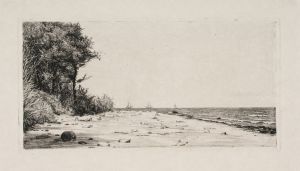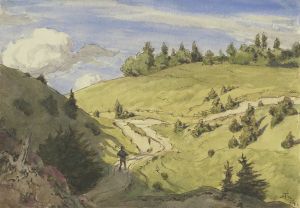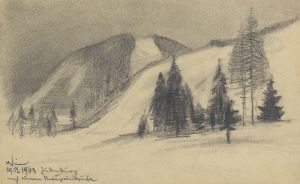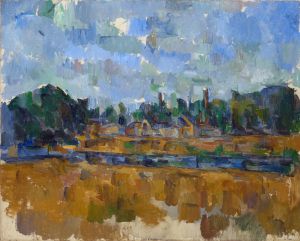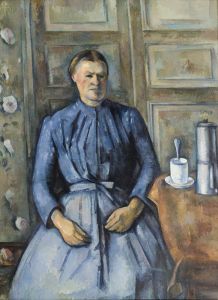
Lake at the Edge of a Forest
A hand-painted replica of Paul Cézanne’s masterpiece Lake at the Edge of a Forest, meticulously crafted by professional artists to capture the true essence of the original. Each piece is created with museum-quality canvas and rare mineral pigments, carefully painted by experienced artists with delicate brushstrokes and rich, layered colors to perfectly recreate the texture of the original artwork. Unlike machine-printed reproductions, this hand-painted version brings the painting to life, infused with the artist’s emotions and skill in every stroke. Whether for personal collection or home decoration, it instantly elevates the artistic atmosphere of any space.
Paul Cézanne's "Lake at the Edge of a Forest" is a notable work by the influential French Post-Impressionist painter, who is often credited with laying the groundwork for the transition from 19th-century artistic concepts to a new and radically different world of art in the 20th century. Cézanne's work is characterized by his unique approach to form and color, which has inspired countless artists and movements, including Cubism and Fauvism.
"Lake at the Edge of a Forest" exemplifies Cézanne's mature style, where he sought to capture the essence of nature through a careful balance of color, light, and form. While specific details about this particular painting are scarce, it is consistent with Cézanne's broader oeuvre, which often focused on landscapes, still lifes, and the human figure. His landscapes, in particular, are renowned for their innovative use of perspective and brushwork, which broke away from the traditional techniques of his predecessors.
Cézanne's landscapes typically feature a harmonious blend of natural elements, depicted with a sense of solidity and structure that was revolutionary for his time. He often painted en plein air, or outdoors, which allowed him to observe the changing effects of light and atmosphere directly. This approach is evident in "Lake at the Edge of a Forest," where the interplay of light and shadow creates a dynamic composition that draws the viewer into the scene.
The painting likely reflects Cézanne's interest in the natural world and his desire to convey the underlying geometry of the landscape. His method involved building up the surface of the canvas with layers of color, using short, hatched brushstrokes that give the painting a textured, almost sculptural quality. This technique allowed him to explore the relationship between color and form, creating a sense of depth and volume without relying on traditional linear perspective.
Cézanne's influence on modern art cannot be overstated. His work challenged the conventions of the time and opened up new possibilities for artistic expression. Artists such as Pablo Picasso and Henri Matisse have cited Cézanne as a major influence on their own work, and his legacy continues to be felt in contemporary art.
While "Lake at the Edge of a Forest" may not be as widely recognized as some of Cézanne's other masterpieces, such as his series of Mont Sainte-Victoire or his still lifes featuring apples and oranges, it remains an important example of his innovative approach to painting. Through his exploration of color, form, and perspective, Cézanne sought to capture the essence of the natural world, paving the way for future generations of artists to explore new artistic frontiers.





